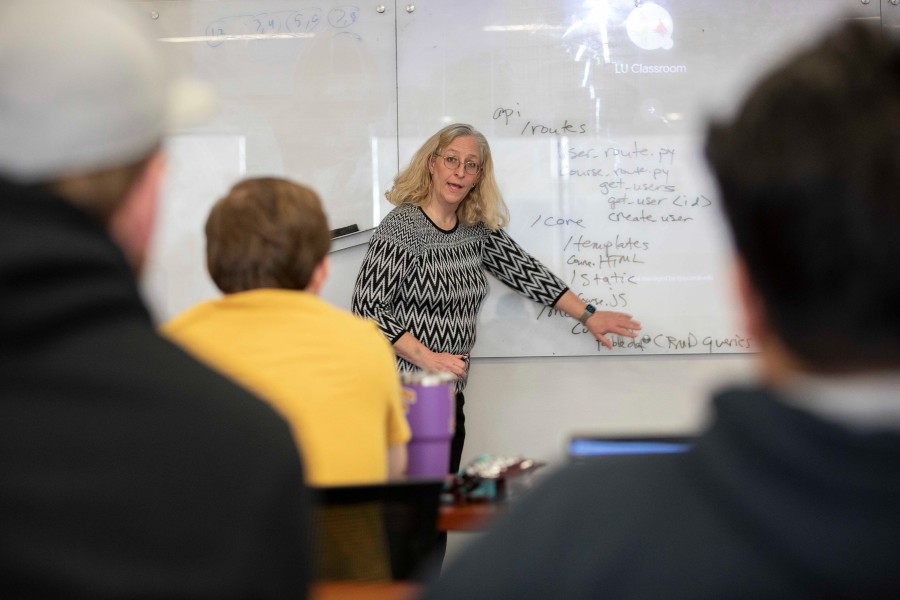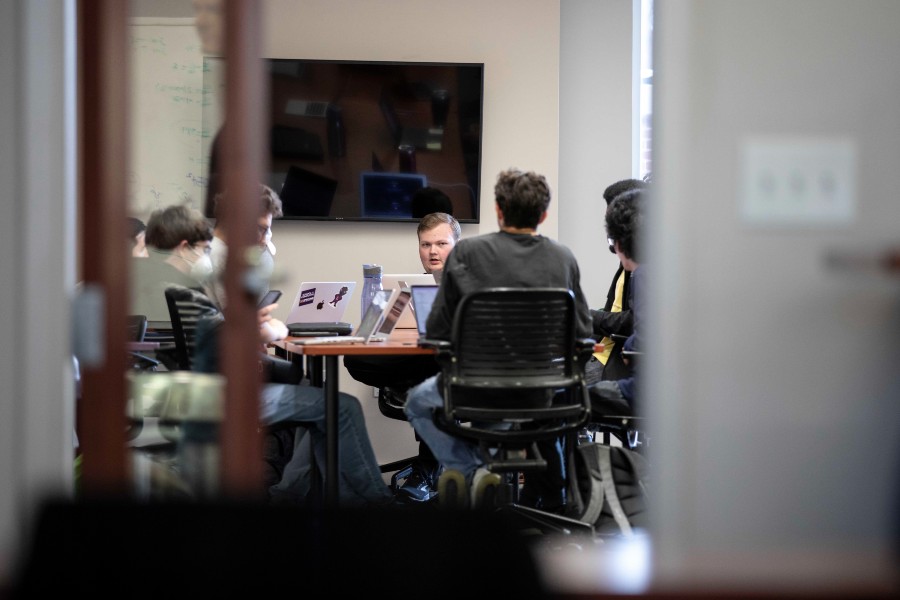Computer science students build software in support of NSF-funded project
Student-built Skill Builder software will someday help teachers nationwide measure mastery of valuable soft skills in small group engagement in real time.
Abigail McQueen |

Since the fall of 2022, Susan Hammond, chair of computer science, has involved around 20 undergraduate computing students in support of a National Science Foundation-funded effort to develop a new software tool that in the future could be used in schools and universities nationwide.
Hammond hopes to have a prototype of Skill Builder, designed to allow classroom instructors to rapidly assess and score students engaged in team-based activities, by this fall. Skill Builder can be used to develop soft skills, such as oral communication and critical thinking skills, for people working in teams.
Hammond and her students are developing the software for the ELIPSS (Enhancing Learning by Improving Process Skills in STEM) Project, which intends to create rubrics to be used by instructors to develop soft skills for people in teams. ELIPSS was funded by a National Science Foundation grant awarded to Virginia Commonwealth University for three professors involved in the POGIL (Process Oriented Guided Inquiry Learning Foundation) Project, an initiative to increase active learning in STEM disciplines.
Hammond’s students in the School of Computing are developing the software in Lipscomb’s Software Studio course, a simulated workplace environment designed to teach students the fundamentals of software engineering, including soft skills such as teamwork, oral communication and critical thinking, in a real-world setting.

Students meet twice a week to work at their software development “company” called Lunatic Labs.
Students meet twice a week to work at their software development “company” called Lunatic Labs. Throughout two years of college, 30 to 35 students each semester progress through four roles in the company: junior developer, developer 1, developer 2 and team leader.
“Students must manage and deliver a software product in the same way they would be if they were hired in the industry,” said the School of Computing’s Associate Dean Steve Nordstrom. “There are no tests and no lectures. Grading is based on metrics tracking the company progress, the same as it is in the industry.”
In addition to working on the Skill Builder software in the Software Studio class, some students have also been paid a stipend to continue the coding work during the summer, said Hammond.
A professor from the University of Iowa developed a prototype of the software but left the university before the prototype was finished. Hammond happened to be at a conference with the ELIPSS Project primary coordinators, chemistry teachers Juliet Lantz from Drew University and Suzanne Ruder from Virginia Commonwealth University. As they discussed their concern about keeping the project moving forward, Hammond offered the use of Lipscomb’s Software Studio class to finish development of the software.
Since the beginning of Lipscomb’s involvement, the students have done all the coding and the design work, said Hammond. She serves in the role, just as it would be in the professional world, of a liaison between the clients and the developers.
“The uniqueness of the Software Studio course for this project is that we can carry the project over. It’s not just one semester and you are done. With the design of this course, you can carry the project out over several semesters,” said Hammond. “We have new team members, but we keep the repository of work already done and the documentation so we can carry it over. It makes us stand out.”
Once complete this coming fall, the ELIPSS project professors will pilot test the software in their classrooms. Instructors will be able to walk around the classroom observing students engaged in team activities and use Skill Builder’s rubrics in real time to measure the soft skills the students are practicing. Students in the team can get immediate feedback on how they are doing and have opportunities for improvement.
The Lipscomb students will then get the feedback from the pilot test and will have the opportunity to improve the program, said Hammond.
Any opinions, findings and conclusions or recommendations expressed in this material are those of the author(s) and do not necessarily reflect the views of the National Science Foundation or Virginia Commonwealth University.